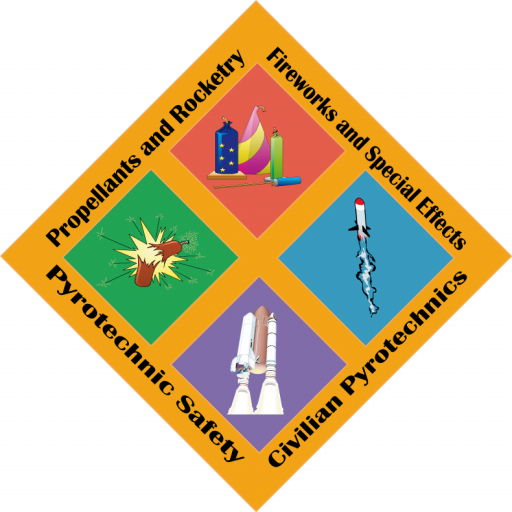Tom Smith and Martin Guest Abstract: Hexachlorobenzene, a persistent organic pollutant, may be present in firework compositions from four sources. This paper makes a proposal to determine what “trace” quantities of hexachlorobenzene may be found in firework compositions, particularly those originating in the Far East where HCB usage was common and contamination still exists. Proposals …
Continue reading A proposal to quantify trace levels of hexachlorobenzene in fireworks
Category:JPyro – Articles
The main category – things that are published in the Journal
Tests of Paper as a Fuel in a Hybrid Rocket Engine
Lucas Beveridge Abstract: The goal of this investigation was to determine how common types of paper would perform compared to pure Cellulose as fuels in a hybrid rocket engine. Although most types of paper are largely Cellulose, it was unclear if the additional components of paper (such as Lignin and fillers) would significantly impact the …
Continue reading Tests of Paper as a Fuel in a Hybrid Rocket Engine
Flame Analysis Of Micro And Nano Flash Powder For Firework Applications
A. Azhagurajan, N. Selvakumar and Sriram Jeyakumar Abstract: Flame height and width of flash powder used in firework manufacturing were observed as a function of their particle size. Mass consumption and flame propagation velocity were also calculated. Particles of 250, 150 and 75 micron size as well as nano-sized particles were used in the study. …
Continue reading Flame Analysis Of Micro And Nano Flash Powder For Firework Applications
Effect of Particle Size and Composition of Oxidisers on Sound Level Analysis of Firecrackers
A. Jeya Rajendrana and T. L. Thanulingam Abstract: Two types of oxidizers, potassium nitrate (KNO3) and potassium perchlorate (KClO4), were used and the particle size of the oxidizers was varied by using a ball mill. The particle size was determined by a particle size analyser. Pyrotechnic mixtures of compositions using the two different oxidizers potassium …
Continue reading Effect of Particle Size and Composition of Oxidisers on Sound Level Analysis of Firecrackers
Quality Control Testing Of Pyrotechnic Articles For The Beijing 2008 Olympic Games
Andrew Tang Abstract: Firework displays are commonly used to celebrate special events. They have been used in Olympic Games opening and closing ceremonies for years. During the 29th Olympic Games – Beijing 2008 Olympic Games Opening and Closing Ceremonies, fi rework displays were therefore used as part of the program. Due to the Chinese traditional …
Continue reading Quality Control Testing Of Pyrotechnic Articles For The Beijing 2008 Olympic Games
UK Fireworks Surveillance for Compliance with ADR and the UN Default Classification of Fireworks
D. Chapman, S. Dennis, B. Joyce, A. C. Donalds and M. J. C. Sime Abstract: Fireworks compositions have been examined for a range of different fireworks. These compositions have been tested and measured to ascertain compliance (or otherwise) with the United Nations (UN) Default Fireworks Classification Table criteria for UN Hazard Division (HD) 1.4G classification. …
Continue reading UK Fireworks Surveillance for Compliance with ADR and the UN Default Classification of Fireworks
Defining Flash Compositions: Modifications to UN Time/Pressure Test
D. Chapman and K. Howard Abstract: The Time/Pressure Test from the UN Manual of Tests and Criteria has been modified to define flash compositions in the default classification lists for fireworks in the UN Model Regulations. This modified test is known as the HSL flash composition test. This paper summarises the history of this change …
Continue reading Defining Flash Compositions: Modifications to UN Time/Pressure Test
What is a “Safety Distance” for a Shell?
Tom Smith Abstract: This paper outlines the risk assessment methodologies and calculates the risks affecting the audience from the malfunctioning of shells. Risks may arise from premature functioning of shells, from stars falling on the audience from low bursting shells, and from shells bursting in or near the audience. Two mathematical approaches are taken using …
Continue reading What is a “Safety Distance” for a Shell?
Blue Flame Pyrotechnic Compositions: A Concise Review
Alessandro E. Contini Abstract: A brief historical background to the development of effective pyrotechnic blue flame compositions, including strobing formulas, from the 19th century to the present day, is presented. The latest prevailing theories on blue flame generation are discussed and a list of some effective modern formulations is given. Also, don’t forget to check out …
Continue reading Blue Flame Pyrotechnic Compositions: A Concise Review
ESI for Ergonomic Hazards in Local Fireworks Factories – Azzopardi
The questionairre (in English and Maltese) used for this survey is available below Return to original article
